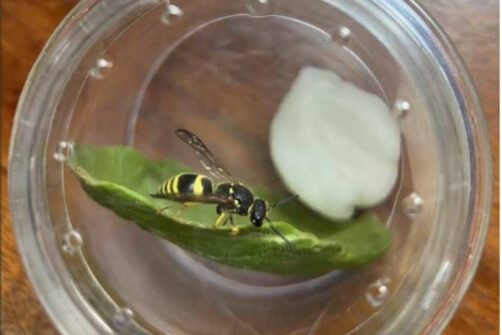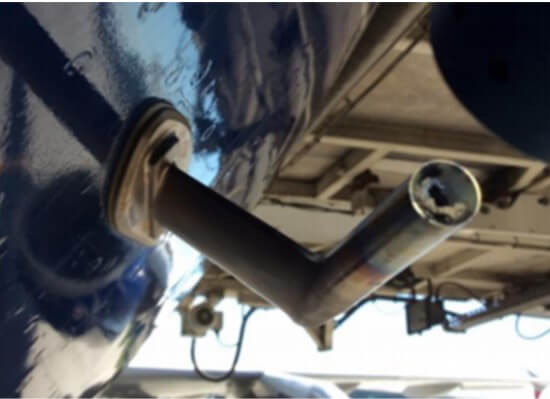Wasps and bees nesting in the pitot tubes of aircraft led to a spate of incidents involving eight aircraft at London Heathrow Airport (LHR) in June and July 2021.
Insects nesting in aircraft pitot tubes is not a new phenomenon. The Australian Air Transport Safety Bureau (ATSB) has previously warned that wasp nests can partially or fully block the tubes, which are used to provide aircraft speed information.
But investigators from Britain’s Air Accidents Investigation Board (AAIB) were keen to look at why there were so many incidents at LHR in such a short space of time. During June and July 2021, eight aircraft, including Airbus A320s and Boeing 777s, suffered abnormal pitot/static events, two of which led to rejected take-offs.
They have concluded that lower levels of human and aircraft activity, with a resulting reduction in noise and pollution, due to the COVID-19 pandemic meant the insects were less likely to be deterred.
“With less aircraft activity, including less noise and jet efflux to deter the insects, the parked aircraft made an attractive opportunity, with the pitot probes providing an ideal construction site for nests,” the AAIB explained.
Which aircraft were affected?
Initially, two blocked pitots were discovered on June 9 and 10, 2021 in British Airways A320 aircraft parked next to each other. The pitot tubes were not covered while parked, in line with the requirements at the time. The report says the airline considered the blockages, one of which resulted in a rejected take-off, a localized event. However, when a British Airways Boeing 777, which had been parked in a different location, abandoned its take-off on June 11 and similar blockages were found, the AAIB were called in.
The UK Civil Aviation Authority (CAA) then issued a safety notice, and the airline implemented a new rule stating any aircraft that had been parked at LHR overnight had to undergo a detailed visual inspection of the pitot probes, rather than the usual general visual inspection. On June 15, 2021, three aircraft failed these more detailed inspections, with insects or eggs being discovered inside the tubes.
On July 1, a Virgin Atlantic Airbus A330, that had been parked at LHR, reported a failure of a pitot probe heater during a return flight to Milan. An inspection following the flight uncovered debris, including dead larvae and contamination of two of the aircraft’s three pitot probes. The heater failure was unrelated to the contamination, the AAIB said.
Finally, on July 19, engineers captured a live insect that was spotted inside a pitot probe of a British Airways A319 during a visual inspection and handed it over to the Natural History Museum for identification.
The insect was identified as a female Wall Mason wasp, while the dead larvae from the Virgin Atlantic aircraft was found to be a leafcutter bee. The wasp is thought to be the main culprit behind the incidents affecting the aircraft parked at LHR, with the pitot tube providing an ideal-sized tube for them to build their nests.
Pitot tube blockage/ Crown Copyright
What about this year?
The AAIB highlighted in its report that the airport operator was working on a plan to provide information to airlines when there is an increased risk of insect activity, which would allow operators to put in place additional measures, such as detailed visual inspections or using pitot covers when planes are on the ground.
The investigators noted that the high level of insect activity seen in 2021 could mean more insects coming out this year.
“Therefore, even though traffic levels and aircraft utilization are expected to increase in 2022, the seasonal risk of insects blocking pitot probes could be significant,” they wrote.
In addition, they highlighted that the environmental reaction to changes in human behavior can be unpredictable and have unforeseen consequences, issuing a word of caution with regard to efforts to reduce the pollution caused by aviation.
“The drive to greener aviation and urban environments will result in quieter, cleaner aircraft and less polluting airports, providing the kind of environments that prove attractive to insects such as bees and wasps.”


